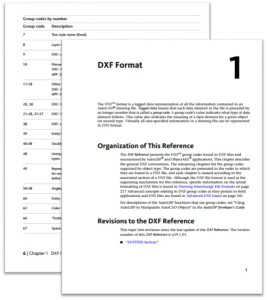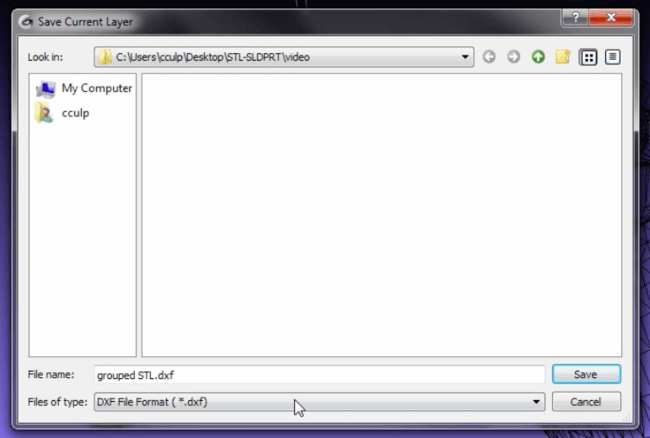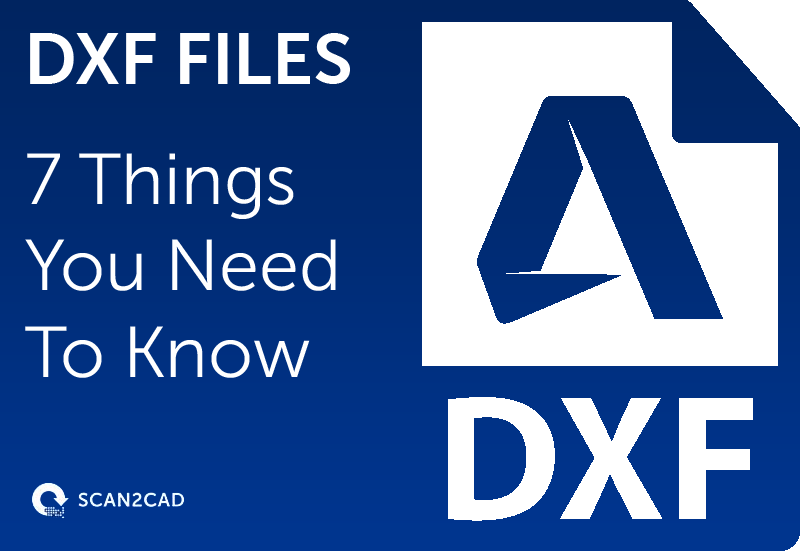At Scan2CAD, we love CAD facts. Not only are they handy for dropping into conversation, but they also help us develop our views, knowledge and application of different areas of design. To kick off our Need to Know series, we’re taking a look at DXF files: the standard exchange format used within the CAD industry.
‘File types?’ I hear you say. ‘Yawn.’ Well, there’s always a chance you’ll find yourself surprised. With something so commonly used as DXF, there’s room to stand back and dig a little deeper into their background, intricacies and quirks; if nothing else, it will refresh our appreciation for the file’s value.
1. They’re as old as AutoCAD itself

Developed in 1982, the DXF file type was invented by Autodesk—in the same year that the company released the very first version of its most well-known design software: AutoCAD. With the program, users would able to create DWG (Drawing) files, which collated the instructions to render drawings into a compact, binary file—but Autodesk recognized that not everyone would run AutoCAD. For some, the software would be too expensive; for others, unsuited to their work. And so, with the technical specifications of AutoCAD’s native DWG format a closely guarded trade secret, Autodesk saw the need to offer an alternative.
They set out to develop a different sort of file type; one that could be accessed, modified and shared by applications across the CAD world, and not just those built by Autodesk. What they came up with was DXF, the Drawing Exchange Format. It precisely replicated the information held in DWG files, but in plain text, rather than binary code.
This proved to be a smart move: in becoming the industry standard for file sharing, DXF files became critical to many different creative industries, from architecture to fashion to manufacturing, almost overnight.
2. DXFs are totally open-source

AutoDesk publishes a specification document of the DXF file format
Did you know that anyone in the world can access the full specification for DXF files for free, so long as they’re able to get online? The specs are published by creators Autodesk, who update them whenever a new version comes out.
This means that anyone with the necessary software development skills can create programs that can read and write DXF files. It’s one example of how Autodesk have recognized that open collaboration with the CAD industry as a whole can aid progress in design more quickly and efficiently than by working alone.
By contrast, DWG files are not open-source; other than paying for the privilege, the only way to read and write such formats are through reverse engineering—a somewhat tricky operation, although many have tried.
And, of course, it would be naive to suggest that developing an open-source file type was an entirely altruistic project. DXF files successfully helped to promote AutoCAD as the new industry favourite; this file type primarily acts a vehicle for customers to get on board with the program, rather than disembark from it.
3. They revolutionized design collaboration

The clue is in the name. X, for exchange, hints at one of the key benefits to saving as DXF: they are supported by almost every CAD program in the world.
Without DXF, it would be difficult for different companies along the design process—many of whom use distinct pieces of software—to work together effectively. Different programs are more suited to different industries—with budget and personal preferences holding a large sway within companies as well.
Making alterations to a drawing produced by others in a different software package would mean that the design would have to be copied from scratch. Such a method is not only prone to miscommunication and human error, but is also incredibly time-consuming.
With the introduction of DXF, issues relating to compatibility were able to be overcome. The common file format allowed individuals across different creative sectors to collaborate on exactly the same design, whatever their choice of CAD program. Architects could suddenly work with engineers, instead of just parallel to them: their efforts combined and integrated into one neat file package. Similarly, a product designer may draw complex shapes in Illustrator, a program more suited to the task than AutoCAD. But their manufacturers are unlikely to run Illustrator, and so it makes sense to export the drawing as a DXF file when sending it on.
Now, it is more or less taken for granted that updated versions of a design can be sent back and forth as different sections are worked on—and such collaboration breeds great design. Unconstrained by each other’s technology, different industries are able to contribute their best work to a project, and together build something that exceeds the sum of its parts.
4. They’re not perfect
If you’re any sort of a regular Scan2CAD reader, you’d be forgiven for thinking that we believe DXF files to be one big bundle of
But we wouldn’t be doing our job if we didn’t recognize that the file type is not without its flaws.
First things first. While they typically offer a smaller file size to their raster counterparts, DXF files will never head the table when it comes to transfer (upload and download) speed. DWG files contain binary code, which condenses the data held within a file to 1s and 0s. If you take a look at DXF file information, on the other hand (by copying it into a text editor, such as Notepad), you’d be able to see full words. As seen above, this can be considered a great thing—programmers can make sense of the code, which has bred a multitude of software that is compatible with the format. However, the long-form data increases the overall size of the file, so it also requires more storage space. This will be particularly noticeable with extremely complex drawings: those that contain many layers.
Another issue is that every time you convert a file, you run the risk of some data loss. So, if you’re designing in DWG, and then exporting your work in DXF to send to a colleague or client, there’s a chance that elements from your initial drawing can go AWOL en route. You can take steps to minimize this liability by learning how to avoid common conversion problems.
So, if there are issues with DXF file types, why are we still such big fans? Well, there are a number of reasons.
5. Scale is no object

Raster files become blurred when they are expanded, whereas vector files keep their quality
Unlike other file types, such as JPEGs or GIFs, DXF files are fully scalable. They are able to offer total precision, with a floating-point of up to an impressive 16 decimal places. What this means in reality is that however far you zoom into the image, it will retain its quality. The file contains all the vital information of a drawing; they can be edited in much more detail than an image file in JPEG or PDF format.
When shared with a client, the design will therefore always look perfect. For example, a logo need only be sent in this one file type to enable its use on anything from pocket-sized business cards right up to extravagant billboards. Other designs are sent to be manufactured, and here again you can be sure that—whatever the size of the end product—there will be no jagged edges; nothing inaccurate to detract from the finished creation.
6. DXF offers unique longevity

Image source: Charles Culp
Whatever the future holds for DWG files, the standard use of DXF for data exchange helps to cement this file type as a format that is evergreen.
As companies migrate to different software packages over time, it makes sense to back up all files in their most widely supported version. That is, currently and undoubtedly, the Drawing Exchange Format.
Compatibility is so integral to usefulness that, within design at least, it has almost become synonymous. What is the point in creating something that cannot be shared, developed, improved and displayed?
Even as DWG files become easier to share between CAD programs, DXF files should be heralded for their longevity.
7. You can often find DXF files for free

Because they’re so compatible with different software packages, and the format is so easy to replicate, there is lots of competition to produce DXF files that are appropriate for CAD users. This has a massive impact on their availability. There are plenty of websites offering downloadable DXF images, which can often be sent directly to CNC for cutting, or used as a basis for more CAD/CAM work. Using pre-drawn files saves time, provides inspiration, and can help you focus on improving specific CAD skills once you’ve acquired the basics.
The best news of all is that many businesses provide a selection of these for no cost at all. At Scan2CAD, we are no exception, releasing whole packs of cut-ready designs every week. But there are so many other resources out there, that we wrote a whole blog post, detailing the best and most comprehensive places to find free designs.
Interesting?
Well, what’s certainly clear is that although DXF files might be standard, even common, they’re certainly not dull. We owe much of the design seen throughout the world today to their development, not to mention the productive collaboration they helped to initiate. From humble beginnings to the heights of revolution, the Drawing Exchange Format deserves a little more respect.


